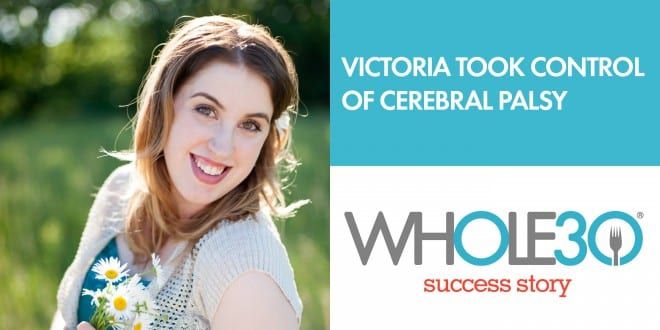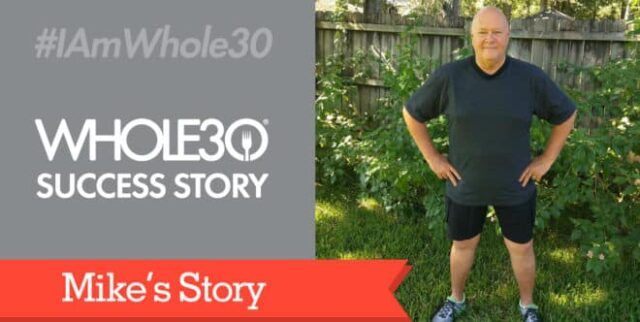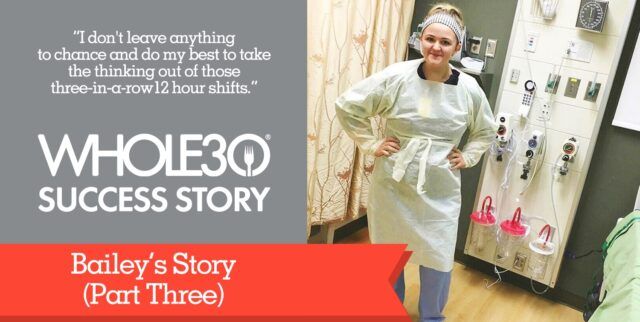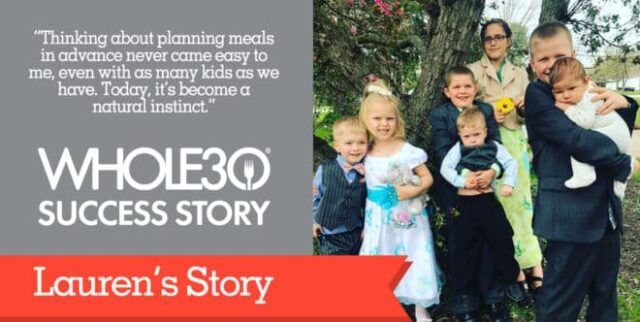This post is part of our ongoing Whole30 success stories series. To submit your own Whole30 success story, contact [email protected]. Since the Whole30 program was first created in 2009, we’ve read hundreds (if not thousands) of your success stories. They all touch our hearts, and fill us with gratitude that we’re allowed to be a part of your deeply personal journeys. We’ve heard stories that make us laugh and make us cry … sometimes we even dance with excitement for you. We’ve also heard stories from people who have seen significant improvement in the symptoms of their medical conditions. What you’re about to read is one of those stories. But before we get started, we need to say this: While we believe wholeheartedly that eating Good Food for 30 days can be incredibly healing to your body and mind, we’re not claiming that the Whole30 program will cure your illnesses. The people you see featured in our testimonials are working closely with their doctors and support teams to ensure they get the most appropriate care for their specific conditions and health context. If you have a medical condition or are working with a medical professional to diagnose or resolve symptoms, please consult them before beginning your Whole30, and work closely with them throughout your program. Read our “Talk to Your Doc” series of articles for help. Now, we’d like you to meet Victoria, and hear how the Whole30 changed her experience with cerebral palsy (CP).
In Victoria’s Own Words
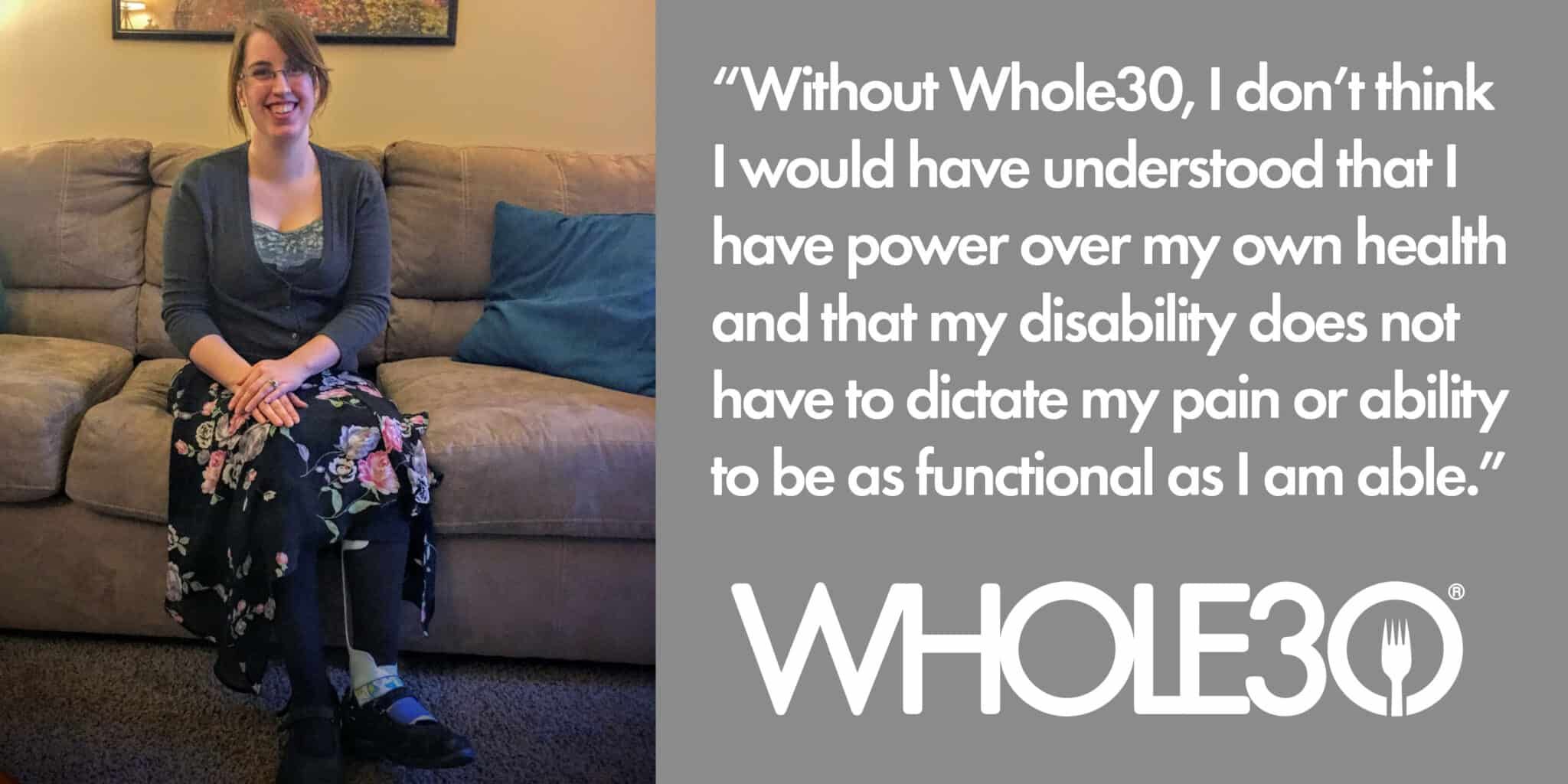 Cerebral palsy is a disability caused by brain damage to the motor skills area of the brain. My main diagnosis is spastic diplegic cerebral palsy, which means a couple of things. Spastic refers to the muscle tone being tight and hypertonic. Diplegic can mean it affects upper half only or lower half only, but my manifestation affects my lower half. I had surgeries at ages 6 and 14 (I’m now 25) to correct muscular and skeletal issues. There are stainless steel plates and screws in both my tibias around the ankle area. Due to the hypertonic nature of my muscles, I have scoliosis and hyperlordosis as well. I ambulate without assistive devices, drive a non-modified car, and I utilize an ankle-foot orthotic (AFO) on my left side. In April 2015, I completed my first round of Whole30 in preparation for my wedding. With cerebral palsy, migraines, chronic pain and tendonitis issues, Whole30 made me acutely aware of how what I put into my body impacts my health. I saw stunning NSVs, including better sleep, fewer migraines, days with no chronic pain, less fogginess, more self-care, and amazing weight loss. As a bonus, my anxiety improved, I stopped craving sugar, and I looked forward to eating great food. January 2016 was my second round of Whole30. During both rounds, my CP symptoms greatly decreased. I found that my spasticity, in general, was not as pronounced, both in my legs and lower back. Within one week most of the swelling that is regularly around my ankles disappeared. When I wake up, I can get out of bed without my ankles giving out on me. Walking without my orthotic without almost collapsing from pain has become a reality again. Before each round, I found myself unable to stand and food prep for longer than an hour due to pain in my SI joints and legs. By the second week, I spent four hours prepping in my kitchen and it only took resting for one hour for me to recover! During the last two weeks of my first round, I had no pain at all. This most recent round, it took until the last week, but I blame the cold weather!
Cerebral palsy is a disability caused by brain damage to the motor skills area of the brain. My main diagnosis is spastic diplegic cerebral palsy, which means a couple of things. Spastic refers to the muscle tone being tight and hypertonic. Diplegic can mean it affects upper half only or lower half only, but my manifestation affects my lower half. I had surgeries at ages 6 and 14 (I’m now 25) to correct muscular and skeletal issues. There are stainless steel plates and screws in both my tibias around the ankle area. Due to the hypertonic nature of my muscles, I have scoliosis and hyperlordosis as well. I ambulate without assistive devices, drive a non-modified car, and I utilize an ankle-foot orthotic (AFO) on my left side. In April 2015, I completed my first round of Whole30 in preparation for my wedding. With cerebral palsy, migraines, chronic pain and tendonitis issues, Whole30 made me acutely aware of how what I put into my body impacts my health. I saw stunning NSVs, including better sleep, fewer migraines, days with no chronic pain, less fogginess, more self-care, and amazing weight loss. As a bonus, my anxiety improved, I stopped craving sugar, and I looked forward to eating great food. January 2016 was my second round of Whole30. During both rounds, my CP symptoms greatly decreased. I found that my spasticity, in general, was not as pronounced, both in my legs and lower back. Within one week most of the swelling that is regularly around my ankles disappeared. When I wake up, I can get out of bed without my ankles giving out on me. Walking without my orthotic without almost collapsing from pain has become a reality again. Before each round, I found myself unable to stand and food prep for longer than an hour due to pain in my SI joints and legs. By the second week, I spent four hours prepping in my kitchen and it only took resting for one hour for me to recover! During the last two weeks of my first round, I had no pain at all. This most recent round, it took until the last week, but I blame the cold weather! 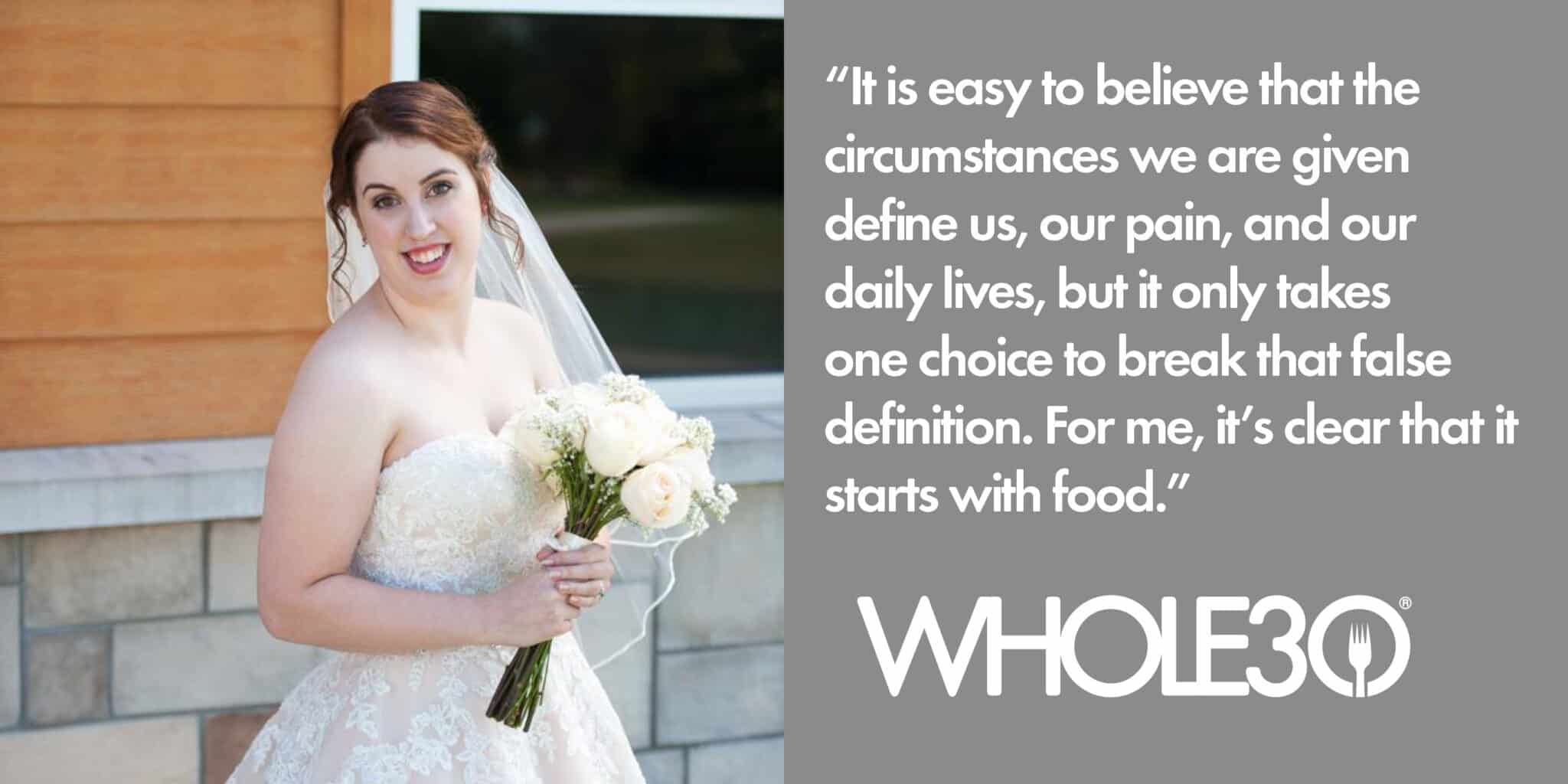 Photo Credit: Love Rachel Photography It has also become a lot less likely for my back to lock up due to spasticity, which tends to happen when I’m in prolonged positions or cold weather. The Whole30 can’t kick all the spasms, but it certainly has helped. Without the spasticity and inflammation, I don’t wake up in the middle of the night in pain and unable to sleep for hours anymore. This only barely touches on how Whole30 positively affects my CP, which is only one of my conditions. I do know this: without Whole30, I don’t think I would have understood that I have even a little power over my own health and that my disability, along with a myriad of concurrent medical issues, does not have to dictate my pain or ability to be as functional as I am able. I’ve learned that I desperately want to be as healthy as I can possibly be through the choices that I have the ability to make for myself, in the hopes that maybe I will be far more functional than I ever imagined. It is easy to believe that the circumstances we are given define us, our pain, and our daily lives, but it only takes one choice to break that false definition. For me, it’s clear that it starts with food. Thank you so much for giving people a framework to change our lives for the better.
Photo Credit: Love Rachel Photography It has also become a lot less likely for my back to lock up due to spasticity, which tends to happen when I’m in prolonged positions or cold weather. The Whole30 can’t kick all the spasms, but it certainly has helped. Without the spasticity and inflammation, I don’t wake up in the middle of the night in pain and unable to sleep for hours anymore. This only barely touches on how Whole30 positively affects my CP, which is only one of my conditions. I do know this: without Whole30, I don’t think I would have understood that I have even a little power over my own health and that my disability, along with a myriad of concurrent medical issues, does not have to dictate my pain or ability to be as functional as I am able. I’ve learned that I desperately want to be as healthy as I can possibly be through the choices that I have the ability to make for myself, in the hopes that maybe I will be far more functional than I ever imagined. It is easy to believe that the circumstances we are given define us, our pain, and our daily lives, but it only takes one choice to break that false definition. For me, it’s clear that it starts with food. Thank you so much for giving people a framework to change our lives for the better.
Share Your Story
Are you a Whole30 success story? Share your story with us in the comments, on social media, or in an email to [email protected].



